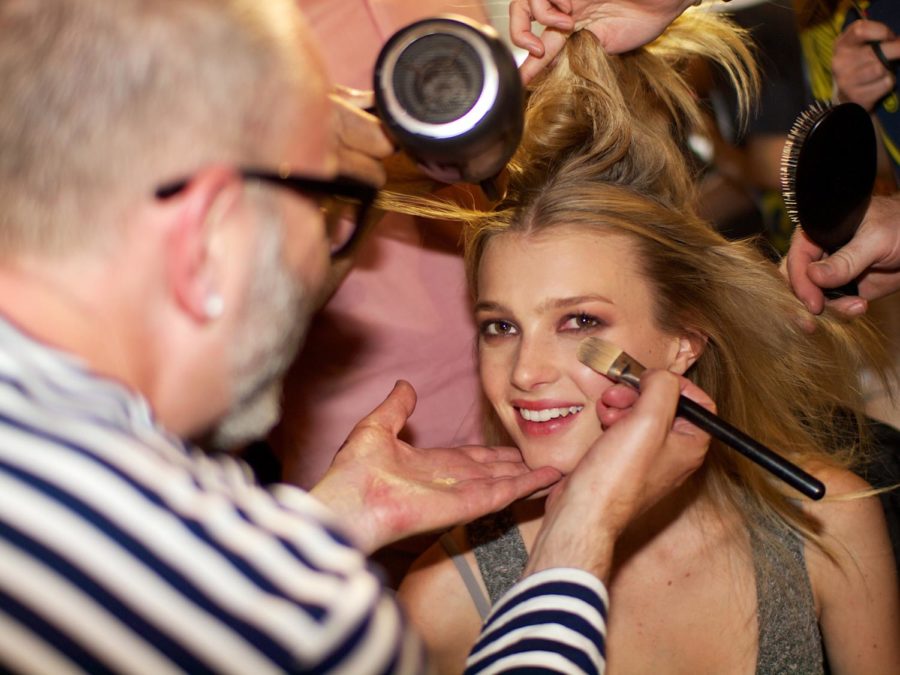Ward: Body dysmorphia, no longer a disorder but normalcy
People around the world face the struggle of being what media portrays they should achieve. Individuals work for unobtainable beauty and even endanger their health.
December 10, 2014
It is human nature to have a physical feature that we really don’t like. For some of us, it’s something small, like a big nose. And then for others, the part of the body that is creating dissatisfaction is a bit larger, like the stomach or thighs. No matter what feature is deemed less than perfect in your eyes, in a majority of people, it does not result in the collapse of your life. But that’s not always the case.
Imagine for a moment that the part of yourself you have labeled as your ‘trouble area’ suddenly became your singular fixation in life and overshadowed all of the positive aspects about you, despite any compliments you might receive. People living with this fixation do exist — which doesn’t come off as a surprise — but in recent years this mentality has been taken one step further.
According to the Anxiety and Depression Association of America, body dysmorphic disorder is a body image disorder that causes a person to be relentlessly plagued with the idea that some part of their body is significantly less than their ideal perfect figure. The most unfortunate aspect of this disorder is that in most cases, the malformation is something entirely dreamed up by the person claiming they have a malformation.
Most commonly, body dysmorphic disorder is developed during the adolescent years and surprisingly appears at about the same rate in boys and girls. The idea that symptoms of body dysmorphic disorder begin to surface between the years of 13 and 19 is not entirely shocking because of the impressionability being experienced. During these years, puberty has taken over and the body is changing, so it doesn’t take any stretch of the imagination to understand why individuals of this age begin experiencing over-exaggerations of their body.
Although it is important to mention that puberty is not the cause of body dysmorphic disorder, it is only a related a factor. If this normative experience was the cause, we would all be walking around with this image disorder. Some of the leading theories as to why this disorder develops is due to genetic predisposition or malfunctioning of serotonin in the brain.
Puberty and naturally occurring physical changes are very important factors when it comes to this disorder, however, there is one other variable that should be taken into account now more than ever — societal impact. No matter where we go anymore we are surrounded with the cookie cutter idea of the perfect physique, whether it be a photoshopped image of a celebrity on a magazine cover, a mannequin in a store or simply not fitting into a pair of jeans, we are reminded of the fact that we just aren’t all built the same. We can’t even escape this image within the comfort of our own homes because of the constant comparison of ourselves to our peer’s pictures on Instagram and other social networking sites. The message that we are not normal then calls into question the idea of who ever came up with the definition of normal?
Nationally body dysmorphic disorder is slowly becoming less of a disorder — with only a handful of specific symptoms in only a fraction of people — but is more a common thought scrolling through our minds because of what we are being exposed to in the media. For example, a few weeks back, Victoria’s Secret released what they called the “Perfect Body Campaign” and it received huge backlash, even sparking a petition created by some female students in Great Britain that acquired over 27,000 signatures by the start of November. Of course the ad features models who in fact do have what most women would call the perfect body, but only a fraction of females actually look like that. Seeing the images only promotes the idea that we should see something wrong with our bodies if we don’t look like them. After gaining huge media attention, the company quietly changed the slogan to “A body for everybody,” to avoid a slow in business, especially with the rapid approach of the holiday season.
Most recently an ad from Calvin Klein featured a beautiful model by the name of Myla Dalbesio in the company’s “Perfectly Fit” campaign because they thought they needed a plus size model to cover all demographics. The only issue is this model is only a size 10. From a woman’s perspective, a size 10 in no way constitutes as plus size.
Both of these companies are very prominent in the fashion world and are watched very closely by the public, so why these corporations decided it would be a good idea to put yet another source of body shaming out into the world is beyond me. As of now, body dysmorphic disorder is a diagnosable disorder, but if the rate of exposure to body shaming material continues to skyrocket, it wouldn’t strike me as the slightest bit unreasonable if it did in a few year’s time, body dysmorphic disorder would no longer be a rarity but just something we all will have to live with.







